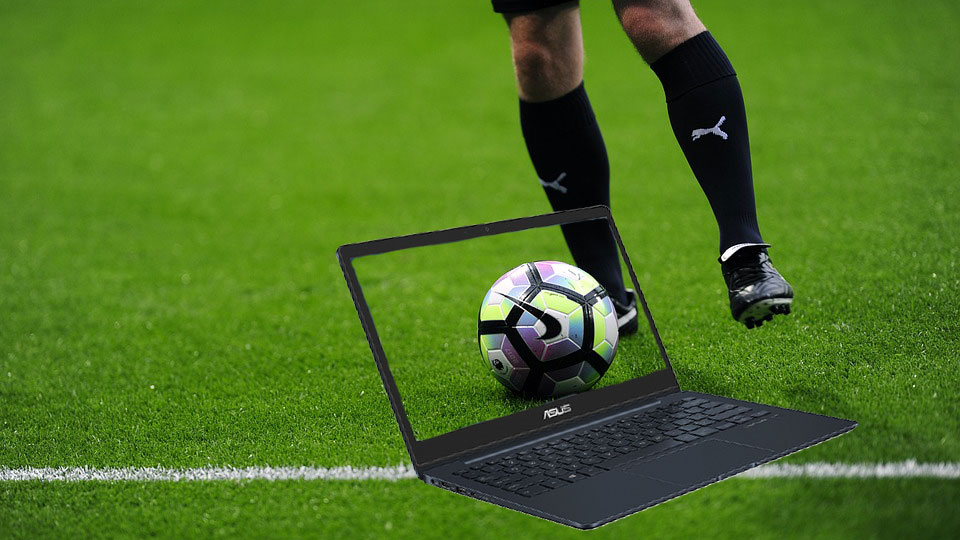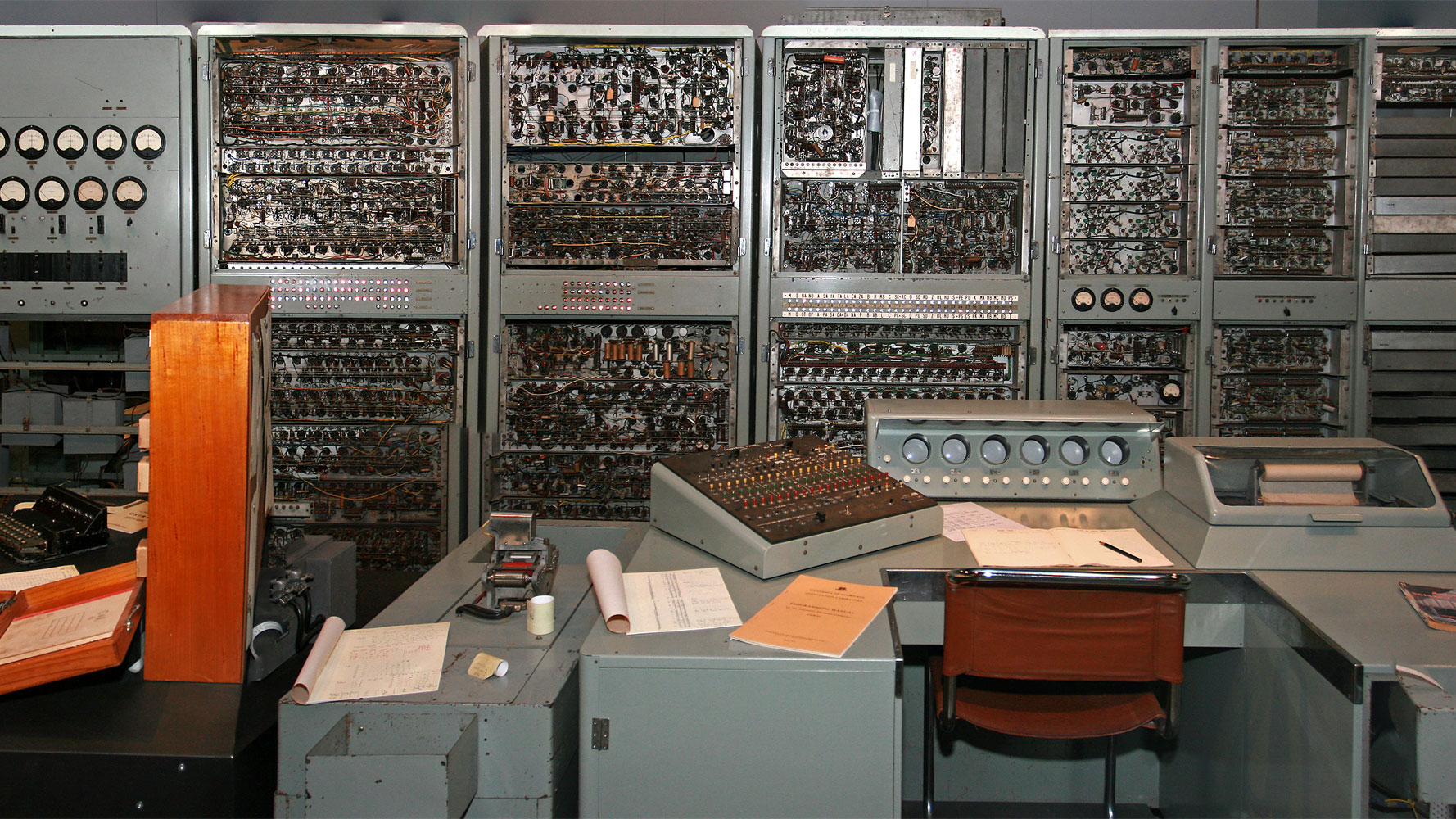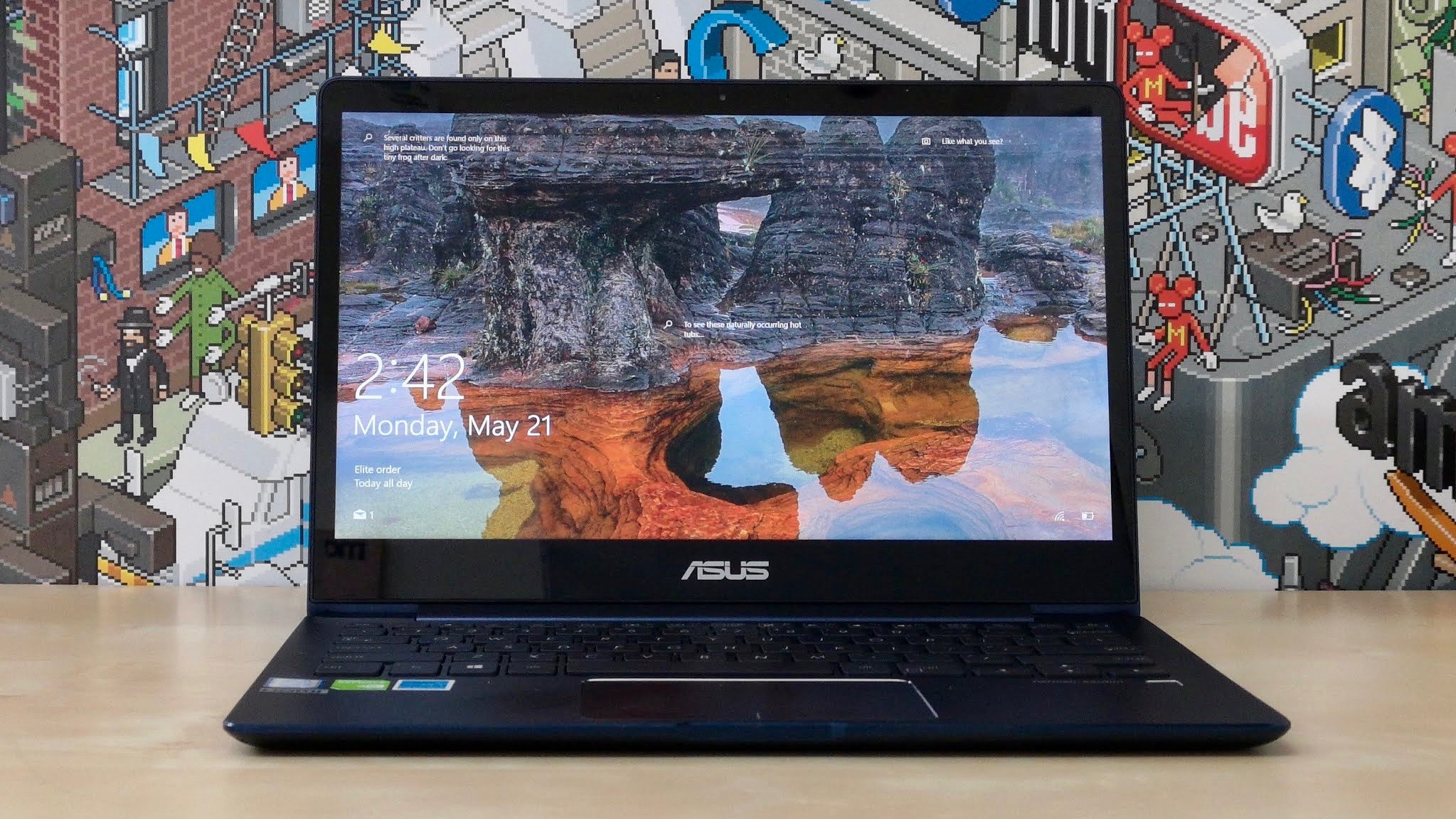The World Cup of Computers: what is the best computer of all time?
If Pele had a processor

Ah, football. Footy. Soccer. The feet. The balls. Some nets. A few flags. It has it all, and while the World Cup is enthralling (or disappointing, depending on how well your country is doing) fans across the globe, it’s got us thinking: what country has been responsible for the greatest ever computer?
To find out more about the Honor 10's incredible AI camera, watch this:
That’s why we’ve pitted the most famous computers from a variety of countries in a knockout tournament to see who will take home the TechRadar World Cup of Computers™.
Knockout Match 1
Russia (Elektronika 60) vs Spain (Enciclopedia Mecánica)
Well, our World Cup of Computers has got off to a cracking start with this showdown between Russia and Spain. Representing Russia is the Elektronika 60, a terminal computer made by the Electronika company. Its claim to fame is that in the 1980s, the first version of Tetris was written for it by Alexey Pajitnov.
On the Spanish side is the Enciclopedia Mecánica, the Mechanical Encyclopaedia, which was patented back in 1949 by Ángela Ruiz Robles, and is often thought of as the first e-book reader.

The Russian team storms onto the pitch with a RAM size of 8KB and performance speed of just 250,000 operations per second, and this has led to a pretty lacklustre performance. However, its iconic status as the home of one of the most popular games ever invented means it’s still an imposing opponent.
Sign up for breaking news, reviews, opinion, top tech deals, and more.
Meanwhile, the Spanish team’s age may be a disadvantage in this game, as it doesn’t have any RAM whatsoever, and uses compressed air to move rotating spindles that displays text and images.
It seems to be a bit of a lopsided match, but the crowd is cheering the Enciclopedia Mecánica on, as it paved the way for the massively successful Amazon Kindle to take over the world.
But wait, what’s this? The ref is holding up a yellow card towards the Russians! Oh dear, oh dear. It looks like the Elektronika 60 is being penalised for being a Soviet clone of the LSI-11, a 16-bit minicomputer by the Digital Equipment Corp.
This leaves the field wide open for the Enciclopedia Mecánica, which has a clear ethical advantage, having been created by Ruiz Robles to lighten the weight of the books carried by her students and, in celebration of her 121st birthday, Google immortalised her in a Google doodle.
That’s it! The whistle has blown and the winner is: Spain! What an upset so early on in the competition! Russia were the favorites thanks to their more powerful hardware, but the beautiful simplicity of Spain’s Enciclopedia Mecánica, combined with its principled ambition to make the life of its creator’s students easier, has seen it through to the next round.
Knockout Match 2
France (Alcatel Minitel communication terminal) vs Australia (CSIRAC)
The next match of our knockout round pits France’s Alcatel Minitel communication terminal against Australia’s Council for Scientific and Industrial Research Automatic Computer. Both have less-than-catchy names, but the Aussies get an early advantage by being better known as CSIRAC, which is slightly easier to type.
CSIRAC was Australia’s first digital computer, released in 1949, making it one of the oldest competitors in this tournament. But, as Spain proved, age is no barrier to success in this World Cup. It’s one of the oldest surviving first-generation electronic computers, and it's one of the first in the world to play digital music. If you’ve ever used Spotify on your PC, then give a small moment of thanks to the CSIRAC next time Ed Sheeran comes on for making all this possible.

But, charging towards it on the pitch comes the young (sort of) pretender, France’s Alcatel Minitel communication terminal. Introduced in the early 1980s by the French government, this beige beauty effectively created the internet before the internet existed. Except it was all in French, and there were no pictures of cats on it.
Using the Alcatel Minitel communication terminal, owners could access up to 22,000 databases and services after paying a subscription charge. France Telecom gave away millions of the terminals for free, and they can still be found in over 6 million homes. Some French government agencies also continue to use these devices.
The fact that the Alcatel Minitel communication terminal is still in use, and not just a dusty curio, gives it an early lead in this contest.
With a text-based screen, keyboard (which can be folded away to cover the screen, beating Microsoft’s Surface Touch Cover by several decades) and a modem that is capable of speeds of 1200 bit/s, the Alcatel Minitel communication terminal is running rings around the CSIRAC, specs wise, the latter being a valve-driven computer which uses mercury acoustic delay lines to store data, with a memory clock of 1000 Hz and a control unit that takes two cycles to execute an instruction.
France is dominating this game, but in the dying minutes of the match, its showboating may be its undoing. While the Alcatel Minitel communication terminal is still being used, some people blame the popularity of the device as being the reason why France was slow to embrace the internet. That self-sabotaging streak isn’t just quintessentially French, but it’s also given the CSIRAC a lead, which despite its age and low computational power, has arguably done nothing but further technological progress for its home nation.
And now the whistle has blown, and Australia has won! Sorry France. If you’re upset by this result, log on to the Minitel service to complain.
Knockout Match 3
Taiwan (Asus ZenBook 13 UX331UN) vs England (Sinclair ZX Spectrum)
Oh, come on. This isn’t fair. Taiwan brings the Asus ZenBook 13 UX331UN onto the pitch. It’s a sleek and sexy ultrabook, with an 8th generation Intel Core i7 processor clocked at 4.0Ghz, full HD 13.3-inch display, 8GB of RAM and Nvidia MX 150 graphics, and it’s the world’s thinnest laptop with discrete graphics.
Meanwhile, England is represented by the ZX Spectrum, which has a 3.5Mhz Zilog Z80 A CPU, 16KB of RAM and has an image resolution of 256 x 192. Well, at least it’s not an Amstrad.
So, the Taiwanese team is well ahead in terms of specs, but what about likeability? Sure, the Asus ZenBook 13 is beautifully designed, lightweight and comes with a backlit keyboard, but the Sinclair ZX Spectrum underdog has plenty of charm as well. It has that iconic rainbow graphic on its keyboard, for example.

There must be something going for it, at least, as even though it was launched in 1982 and discontinued in 1992, over 40 new pieces of software have been released so far in 2018! Would the ZenBook have that kind of following over 30 years later?
And the games. Oh, the games. Jet Set Willy, R-Type, Dizzy, The Hobbit. Match Day II for football fans who are still reading this.
As for the ZenBook 13, what iconic games can it play? Except for all of those games via emulators. And many modern classics thanks to its powerful dedicated GPU. OK, fine, the ZenBook 13 is a much better computer than the Sinclair ZX Spectrum. Game over. Taiwan won. We’re not bitter.
Knockout Match 4
USA (Apple iMac G3) vs Japan (Panasonic Toughbook CF-31)
Here is the match that many people have been anticipating: the showdown between two goliaths: on the US side we have the iconic iMac G3, one of the most popular all-in-one PCs ever made, and from Japan we have the near-indestructible Panasonic Toughbook CF-31.
First on the pitch is the iMac G3, which although slightly egg shaped, is a tough little PC, emerging onto the scene in 1998, with an eye-catching design by Sir Jonathan Ive that became a pop culture icon in the 1990s.
Meanwhile, the Panasonic Toughbook CF-31 is a sturdy little bruiser, combining military-endorsed ruggedness with high performance. It comes with a full magnesium alloy case and built-in handle, scoffing at the iMac G3’s fancy colored look in favor of a ruthlessly robust design.
It may not look as pretty as the iMac, but can Apple’s PC survive a six foot drop, high temperatures, dust and water like the Toughbook CF-31? Of course not. You just have to look at the G3 the wrong way for it to crack like an over-expensive egg.

With a DVD drive, GPS, touchscreen and more, the Toughbook CF-31 is dominating this game, while the iMac G3 can barely keep up with its 4GB hard drive and 128MB RAM. However, the US team is showing some ballsy innovation as well, ditching the then-common floppy drive in favor of something called ‘USB’ ports. Will it pay off? Yes. Yes it did.
And, while the Panasonic Toughbook CF-31 is playing an exceptional game thanks to power and build quality, it’s struggling against the iMac’s status as an icon of modern computers. The fact that it helped change the fortunes of the floundering Apple, which went on to become one of the biggest companies in the world, means the win has to go to the iMac G3.
But Japan should hold its head high, the Panasonic Toughbook CF-31 put in a fantastic performance.
Semi-final match 1
Spain (Enciclopedia Mecánica) vs USA (Apple iMac G3)
Spain’s Enciclopedia Mecánica enters the pitch with the crowd roaring its support, buoyed by its surprise win in the knockout round. It’s clearly the underdog in this match, but the audience love it. However, as it does a lap of victory (a bit premature, as the match has only started), it’s got one of its spindles stuck in ground! A free spindle is furiously waving around, and the word ‘ayuda!’ can just about be made out.
And here comes the USA with its iMac G3! It rolls onto the pitch, straight up to the Enciclopedia Mecánica and crushes it under its weight, like a great big egg laid by Jony Ive himself.
USA wins!
Semi-final match 2
Taiwan (Asus ZenBook 13 UX331UN) vs Australia (CSIRAC)
Here we are at our last semi-final match, and Australia’s CSIRAC is already on the pitch, and looks terrified. Taiwan’s Asus ZenBook 13 saunters in, full of confidence and RAM, easily the favorite in this match.
Oh, and it’s off to a bad start, as the CSIRAC has blown a valve in fear! Meanwhile, the Asus ZenBook 13 dominates the game, the only valve it knows being the company behind Half-Life and Steam, everybody’s favorite DRM-riddled storefront.
With the Asus ZenBook 13 running rings around the still-smoking CSIRAC, it’s a clear win for the Taiwan and the Asus ZenBook 13.
Final
Taiwan (Asus ZenBook 13 UX331UN) vs USA (Apple iMac G3)
Here we are at the final of TechRadar’s World Cup of Computers. Both sides have played spectacularly well in this tournament, and we can tell this is going to be a close game.
The Apple iMac G3’s iconic design gives it an early lead, but the ZenBook 13 counters with a slim and light look that makes it an incredibly desirable laptop. The sheer feat of engineering it’s taken to cram the powerful components of the ZenBook 13 into such a slim body is a marvel, putting the ZenBook 13 ahead early on in the match.
However, the iMac G3 fights back thanks to just how important the device was in changing Apple’s fortunes. If Apple hadn’t struck gold with the iMac G3, who knows what the computing landscape would look like these days. While the ZenBook 13 is a great device, it hasn’t had the same impact for Asus.

We’re getting into the last minutes of the game, and it looks like it could be a tie. However, the ZenBook 13 has one more trick up its sleeve: the future.
While the iMac G3 was a ground-breaking all-in-one PC (which means it is a desktop PC with a built-in monitor), all-in-ones remain a rather niche product.
Meanwhile, the ZenBook 13 represents the future of computers. It’s powerful, light and beautifully designed. Ultrabooks like the ZenBook 13 are redefining what we think of when it comes to computers.
It’s a risky manoeuvre, but it’s paid off, and as the final whistle blows Taiwan – with the Asus ZenBook 13 – is the champion of TechRadar’s World Cup of Computers 2018! A very well-deserved winner.
WINNER: Asus ZenBook 13 UX331UN

TechRadar's World Cup coverage is brought to you in association with Honor.
- Want to see the current competitors for best computer? Check out: Best computer 2018: the best PCs we've tested

Matt is TechRadar's Managing Editor for Core Tech, looking after computing and mobile technology. Having written for a number of publications such as PC Plus, PC Format, T3 and Linux Format, there's no aspect of technology that Matt isn't passionate about, especially computing and PC gaming. He’s personally reviewed and used most of the laptops in our best laptops guide - and since joining TechRadar in 2014, he's reviewed over 250 laptops and computing accessories personally.